In our film Talent Hounds, we explore the evolving talents of dogs. One of the most impressive segments focuses on the Dog’s incredible Sense of Smell and how they are now being trained to use it.
Drug detection dogs are amazing. They can detect the scent of marijuana in tiny quantities hidden in amongst hundreds of boxes in a factory. They undergo rigorous training enhancing their natural hunt and retrieve drive and sense of smell.
Dogs can detect some odours in parts per trillion. Some possess up to 300 million olfactory receptors in their noses, compared to about 5 million in ours. The percentage of a dog’s brain devoted to analyzing smells is much larger than ours. Dogs separate breathing and sniffing and can wiggle their nostrils independently. This helps them to sniff very efficiently and to find scent trails.
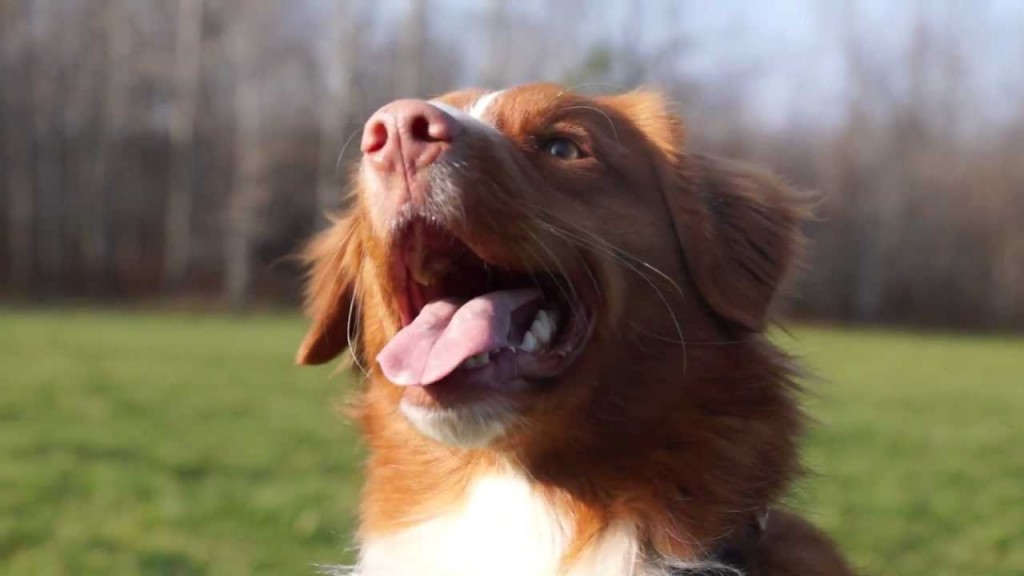
“Their sense of smell is just beyond our comprehension, and we use that sense of smell for a variety of purposes. Dogs of course, have a natural instinct to hunt and they want to go off to hunt for themselves. They are interested in a meal, they want something to eat. The dramatic change occurred when we were able to train dogs to go off and hunt but not eat what they actually found. They love human companionship, they thrive on human companionship and they get great satisfaction out of doing something for us. So even though that rabbit or that pheasant is really tasty, I’m going to go and grab it, and I’m not going to chew it, I’m going to bring it back and give it to you.” -Dr Bruce Fogle
Some dogs still train as valued hunting partners to hunt game or even rubber ducks and there are training facilities, clubs, and trials across North America.
Working Dogs: K9 Narcotics
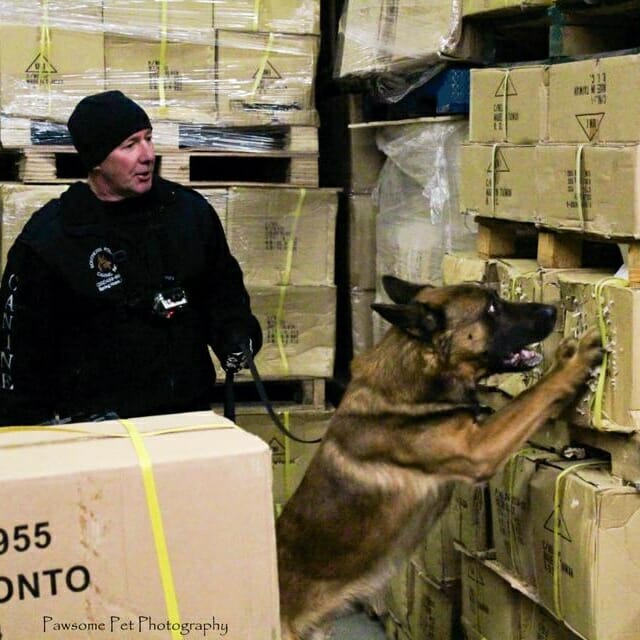
We met Bill Hird- Trainer, Pawsitive K9 Training who trains dogs to detect narcotics and watched a demo.
“I’m not really training the dog. The dog already has the instinct in him bred through years and years of selective breeding, so all I’m doing is enhancing that and working it for me. The majority of the dogs are German Shepherd, Belgium Malamars or anywhere in between. You test them for the hunt drive, the retrieve drive and just keep working them on those sorts of things. If you have an object and you scent it and you toss it into long grass, you want the dog to continue searching for that item. You don’t want it to rely on you. You don’t want it to keep looking back at you, coming back and then you having to send it out again. You want to watch that dog continuously search, using his nose. You don’t want them to use their eyes, you want them to search for the scent. Max is trained in aggressive search, so he gives a scratch indication when he finds a drug-scented object. So you’ll see – as soon as the dog picks up an odour of whatever narcotic it is, you’ll see a change in his breathing, then you’ll see a change in his body language. Then at that point the third indication is, he’ll scratch when he finds it.”
We spent a morning watching dogs including trainee Edge a 14-month-old German Shepherd, from Toronto Police Services Canine Unit in action. The dogs go through rigorous screening and then training for 15 weeks for search and rescue. The training uses a toy and praise as rewards and develops their natural drives to hunt and retrieve.
Police Constable Adam Landry explained, “This is called a box field, we train the dogs to detect human scent as opposed to being able to see the person. They are trained to use their nose and let us know when they find human scent. So we’ll hide a person in one of the six boxes that are out here and then we’ll give him a command to go search the field. And once he locates human scent in one of the boxes, he’ll bark, letting me know that he’s found human scent. The reward for these dogs is actually from the person hiding in the box. So they’ll have one of his toys, and they’ll open the box, get him really excited and happy to see them and eventually give him his toy.”
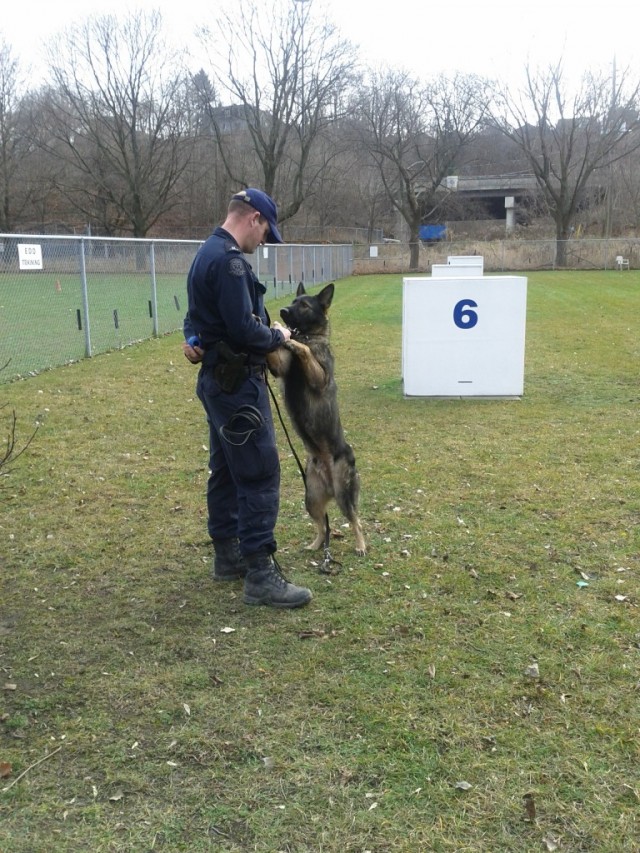
Cancer Sniffing Dogs
Dr Bruce Fogle informed us about the progress dogs are making in early detection of cancer through sniffing urine, breath and other samples which may save many lives. “A trained dog can actually scent the difference between a urine sample from somebody who does have a transitional cell carcinoma and one from someone who does not”.

Thanks to an introduction from Cheryl the DogGuru, we also interviewed Cancer Detection Dogs in Canada CancerDogs.ca and saw their dogs being trained with treats and a clicker when they picked a positive sample. Dr Stanley Coren told us an anecdote about a woman who’s dog alerted her to a malignant melanoma.
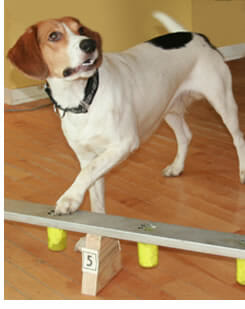 Dogs are also being trained to sniff out bed bugs, termites, truffles and other plant species.
Dogs are also being trained to sniff out bed bugs, termites, truffles and other plant species.
According to Trainer Renee DeVilliers from All About Dogs in her article for Dogs Dogs Dogs newspaper, “One of the newest additions to the world of dog sports is Scent Detection… Classes in scent detection and nose work are increasingly popular. They teach the average dog owner skills used by professionals to detect and alert to a variety of scents.”
Sonic and Lucinda from Canine Campus show off their scent detection trick. Sonic looks like he’s reading and sorting numbers and letters- very cute and clever.
Does Your Dog Do Scent Detection Work? Share your tips and comments in the comments below.

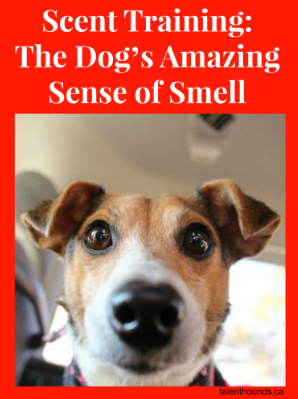
Leave a Reply